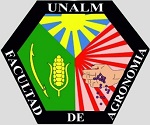Can Salvia splendens ‘Red Vista’ be used in association with the mycorrhizal fungus Glomus intraradices for the assisted phytoextraction of lead from the soil in Lima, Peru?
DOI:
https://doi.org/10.21704/pja.v3i2.1313Keywords:
Salvia splendens, Glomus intraradices, phytoremediationAbstract
In Peru, gasoline containing lead as a main component was used in vehicles up until 2006, when the Government banned its sale. However, since this was preceded by a century of constant use, there is a high chance that most urban soils are polluted with this heavy metal. Hyperaccumulator plants that take up heavy metals from the soil and store them in their tissues without showing any symptoms of toxicity may be the solution to this problem, as the use of these plants for phytoremediation does not require large amounts of money, can be carried out in situ, and is environmentally friendly, making it one of the best options for urban areas. However, unfortunately, there are only a few known species of hyperaccumulator plants that can be grown in urban environments. Therefore, we conducted a bioassay at the Soil Fertility Laboratory of the Agronomy Faculty at the National Agrarian University La Molina, Peru, over a period of 4 months to determine the hyperaccumulation capacity of Salvia splendens ‘Red Vista’ and to examine whether the mycorrhizal fungus Glomus intraradices can enhance the extraction of lead from the soil. After harvest, the plants were divided into three parts (roots, leaves, and inflorescences) to determine the concentrations of lead in the various tissues. We found that S. splendens ‘Red Vista’ did not accumulate high amounts of lead in its tissues even when it was associated with G. intraradices and consequently should not be considered for use in phytoextraction.Downloads
References
Steinnes, E. (2013). Lead. In B. Alloway (Ed.) Heavy metals in Soils. (pp. 395-411) USA: SPRINGER.
Londoño, L., Londoño, P., & Muñoz, F. (2017) Risks of Heavy Metals in human andanimal health. Biotecnologia en el sector agropecuario y agroindustrial, 14(2), 145- 153. DOI:10.18684/BSAA(14)145-153
Maldonado M.A., Favela T.E., Rivera C.F. & Volke S.T.L. (2011). Lead bioaccumulation in Acacia farnesiana and its effect on lipid peroxidation and glutathione production. Plant and Soil, 339, 377-389.
Ministerio del Ambiente. (2014). Guía para el muestreo de suelos. Perú: Mavet Impresiones E.I.R.L.
Nowak, J. (2007). Effects of cadmium and lead concentrations and arbuscular mycorrhiza on growth, flowering, and heavy metal accumulation in Scarlet sage (Salvia splendens Sello ‘Torreador’). Acta Agrobotanica, 60, 79-83.
Organismo Supervisor de la Inversión en Energía y Minería. (1998). Aprueban el Reglamento de Infracciones y Sanciones al D.S.No.019-98-MTC que dispuso eliminar del mercado la oferta de Gasolina 95RON con plomo. RESOLUCIÓN 405-98-OS/CD. In El Peruano. [November 4, 1998].
Rizzi L., Petruzzelli G., Poggio G. & Vigna Guidi G. (2004). Soil physical changes and plant availability of Zn and Pb in a treatability test of phytostabilization. Chemosphere. 57, 1039-1046.
Tamayo, J., Vásquez, A., & De la Cruz, R. (2015). La industria de los hidrocarburos en el Perú: 20 años de aporte al desarrollo del país. Perú. OSINERGMIN.
Tu C., Ma l.Q. & Bondada B. (2003). Arsenic accumulation in the hyperaccumulator Chinese brake and its utilization potential for phytoremediation. Journal of Environmental Quality. 31, 1671-1675.
World Health Organization (2014). Semana de acción internacional para prevenir el envenenamiento por plomo: del 19 al 25 de octubre de 2014, Organización Mundial de la Salud. Retrieved from https://www.who. int/phe/health_topics/faq_lead_poisoning_prevention_ campaign_es.pdf










